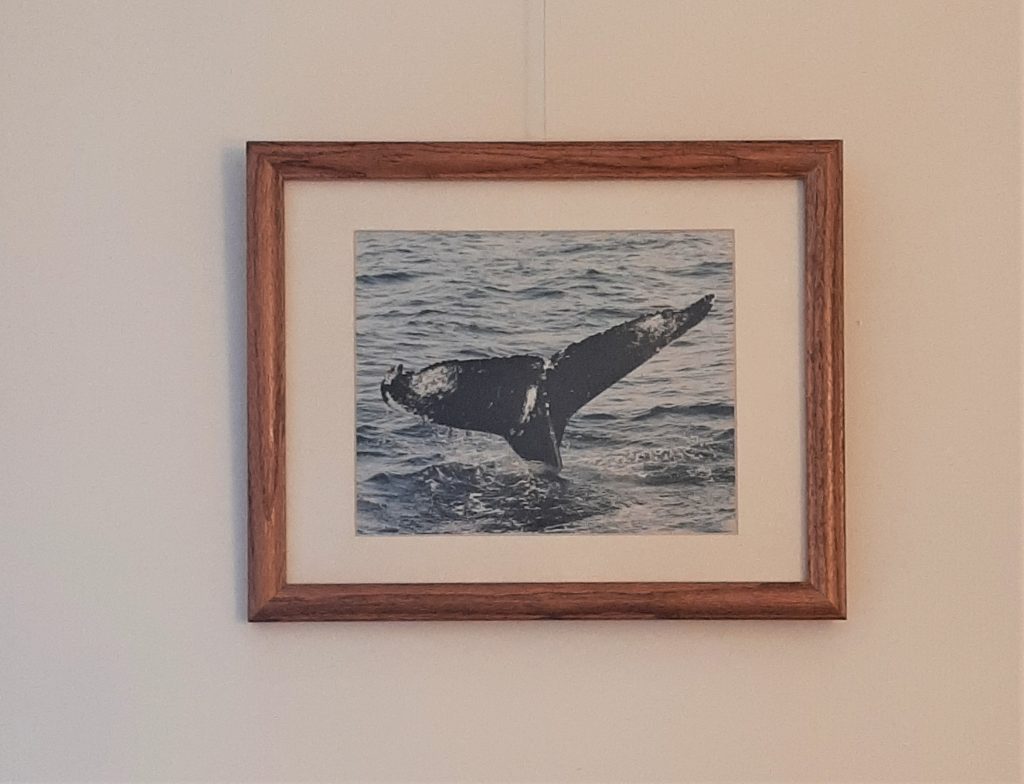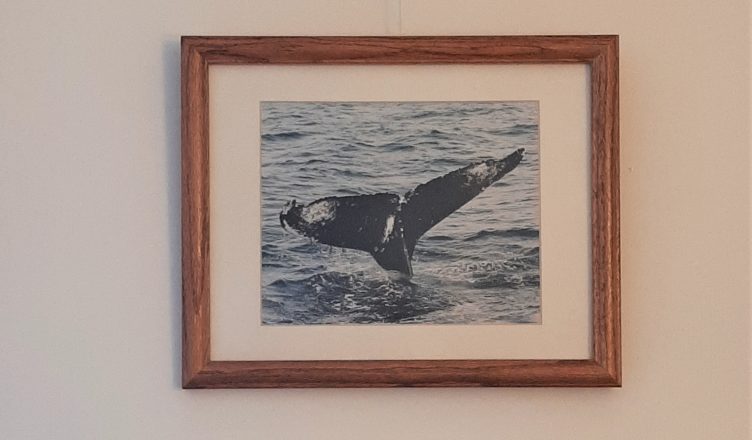When I was in high school (just a few decades ago) I received a whale adoption kit for my birthday. Even way back then, I was into wildlife conservation efforts- wolves, pandas, and yes of course whales. I read through the various biographies included with the kit which described the whales available for adoption and settled on a humpback whale named Spoon. I chose her because her profile said she was a “mature female”. Some other whales were listed as “mature males”, but I knew that couldn’t be true (ha!). I soon received my black and white photo of Spoon and hung it on the cork board in my bedroom, looking at it often. Each year after, I received a renewal notice in the mail and of course I had to renew my adoption. I couldn’t let Spoon starve to death or whatever the adoption fee went towards. She was my whale and it was my responsibility to keep her safe.
Flash forward to the summer between my junior and senior years of college. I answered an add in the local newspaper looking for deckhands to work on a whale watching boat. I had been on a few whale watches before and always loved seeing the whales. What a fun way to spend the summer, I thought. I called the number, had an interview with one of the captains and was hired! Working 12 hours per day, 6 days per week would have been exhausting if it had not been for the excitement of seeing the whales. I soon began to recognize the individuals and learn their stories from the naturalists aboard. I remember seeing Littlespot, Marble, Regulus, Satula and Owl among many more humpback whales that year. I never expected to see Spoon, and I didn’t. At least not that year.
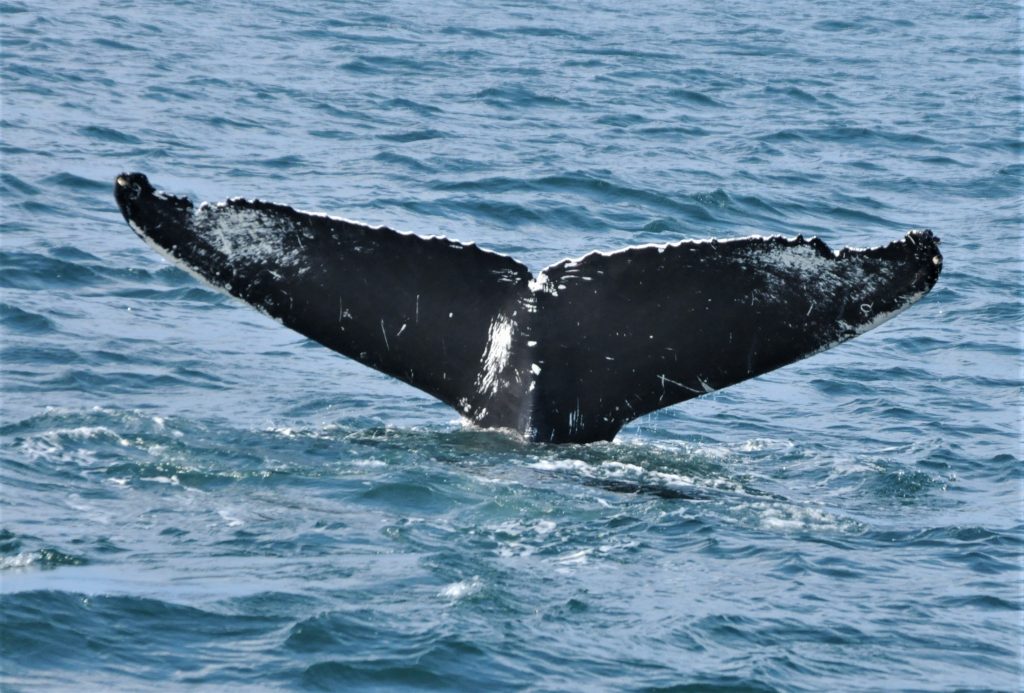
After graduating from college, I went back to the whale watching company for the summer. I was thinking of getting into aquaculture eventually, but figured I’d spend one more summer on the boat before taking on a land-based job. This year I split my days between working as a deckhand and as a naturalist. The summer was pretty decent as far as sightings go. Satula and Marble were seen together quite a bit, and Owl was around again, too! It wasn’t until one very special day that I decided to make whales a major part of my life. I saw Spoon. Seeing that distinctive tail come out of the water, I immediately knew who she was after years of looking at her photo on my wall. It was like seeing a celebrity in person! Just seeing her wasn’t what made me rethink my career path. It was knowing her history. Spoon was first seen in 1977, just a few years after I was born. To know that she could be tracked from year to year just by the markings on her flukes was pretty amazing to me. Our little boat catalog had records of all the calves she had been known to produce (Regulus was one of them!). We could even talk with researchers who could tell us where she had been seen over the years! The personalizing really allowed me to connect with an individual animal as well as the species overall. That inspired me want to learn more about the threats to whales and what I could do to protect their habitat. Working for an aquaculture company quickly fell off my radar. I wanted to use my degree to help save whales.
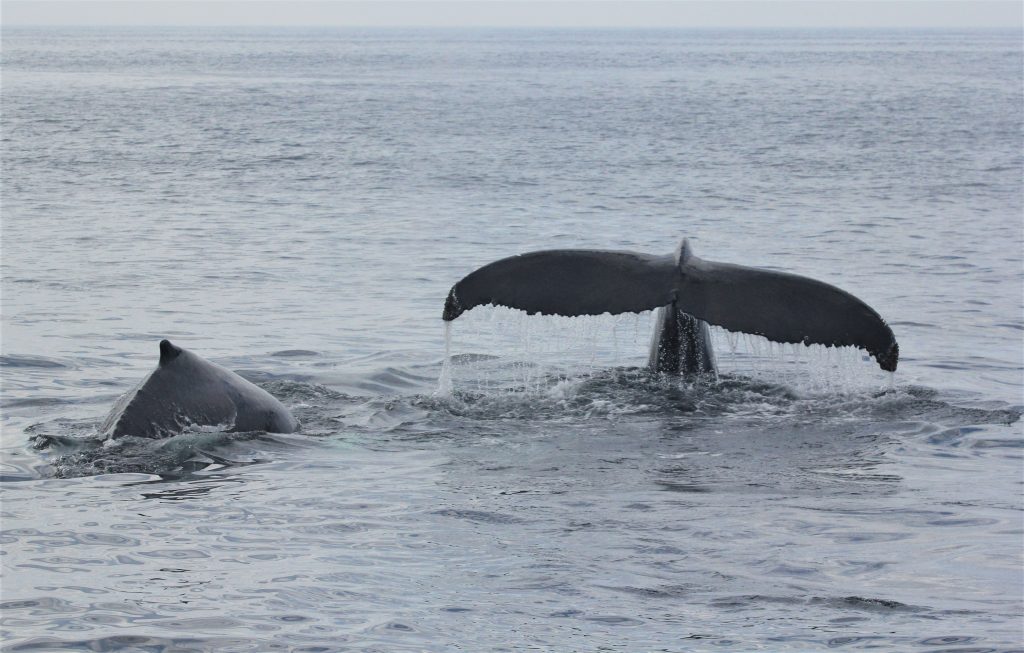
I know that not everyone who adopts a whale will start their own non-profit organization to help save them, but I do hope that by having that connection with an individual whale, like I did, will inspire them to take actions for their protection.
Although the organization through which I first adopted Spoon is not longer in existence, several regional organizations, like Blue Ocean Society, now have adoption programs of their own. The adoption fees help these smaller organizations to continue the research to protect the whales and their habitat as well as to reach out to the public to demonstrate conservation practices.
Blue Ocean Society’s Adoption Program
This summer, Blue Ocean Society naturalists and researchers saw five of our eight adoptable whales! Photo analysis (scrutinizing all 30,000 images collected this summer) has not yet been completed for this year so it is possible we will find some distant images of our three missing friends (fin whales Fjord and Dingle, and minke whale, Scar). Our most frequently seen adoptable whale was the humpback named Pinball (and her calf), having been seen on 18 different days!
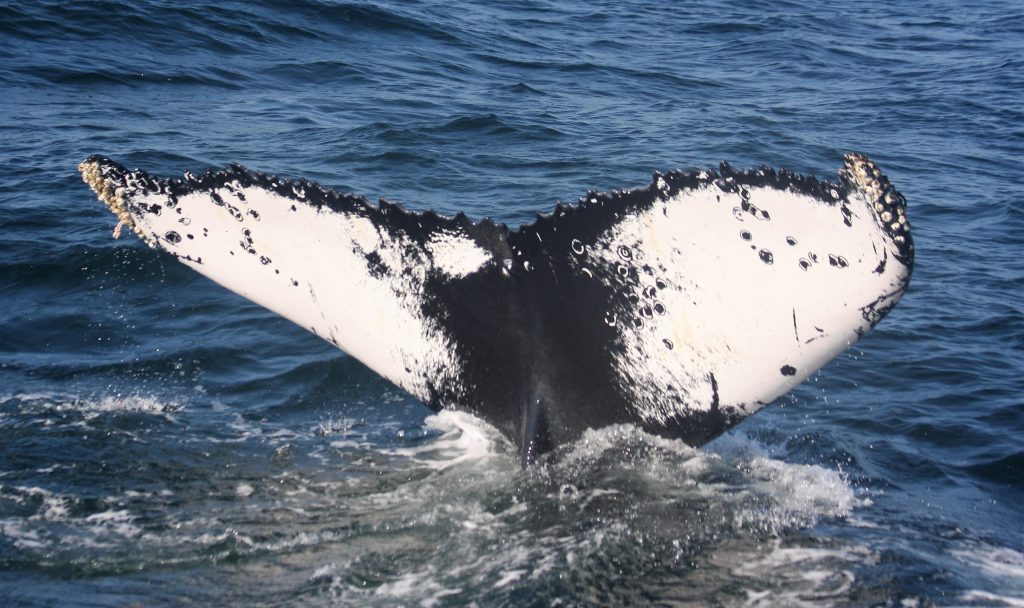
A close second was the humpback whale named Owl who was seen on 17 days.
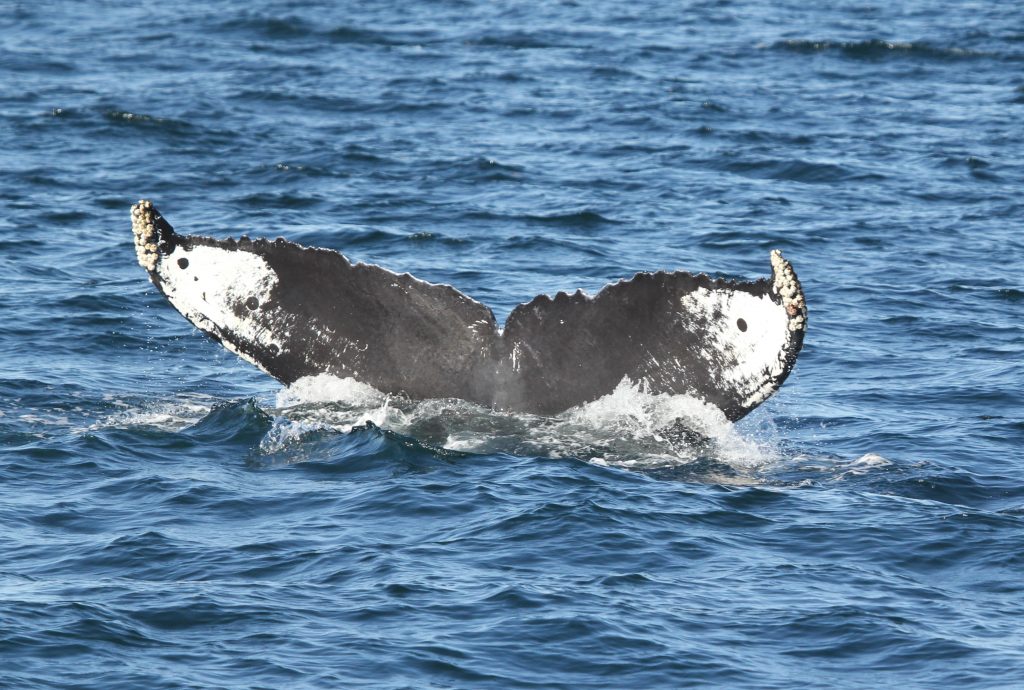
Satula and Hornbill, both humpbacks as well, came in at 12 and 8 days, respectively.
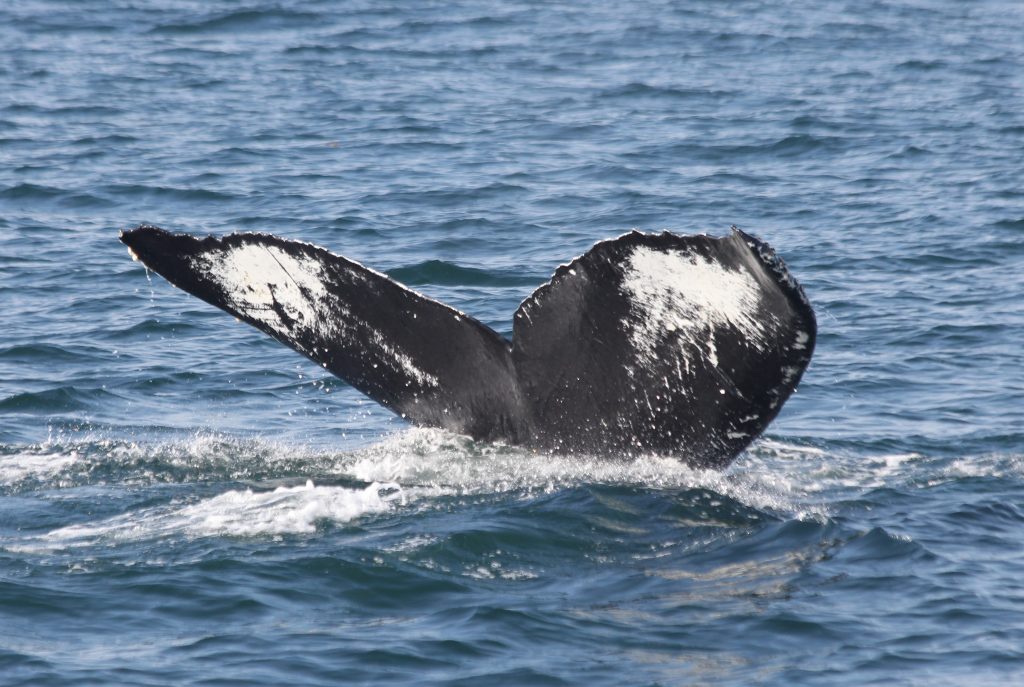
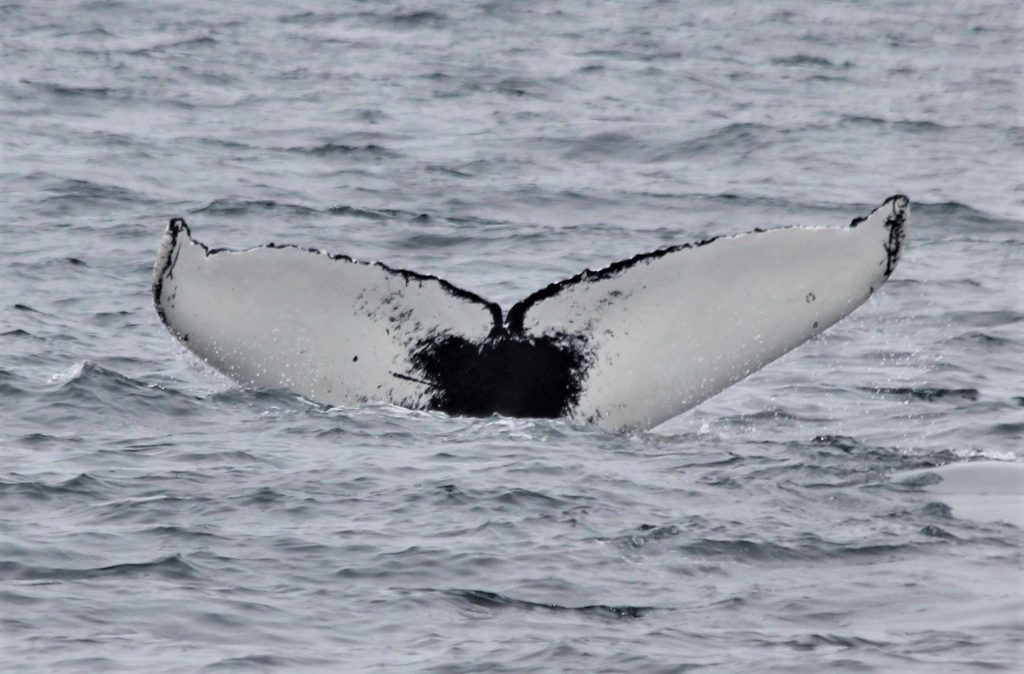
Fin whale, Comet, was seen on 4 days.
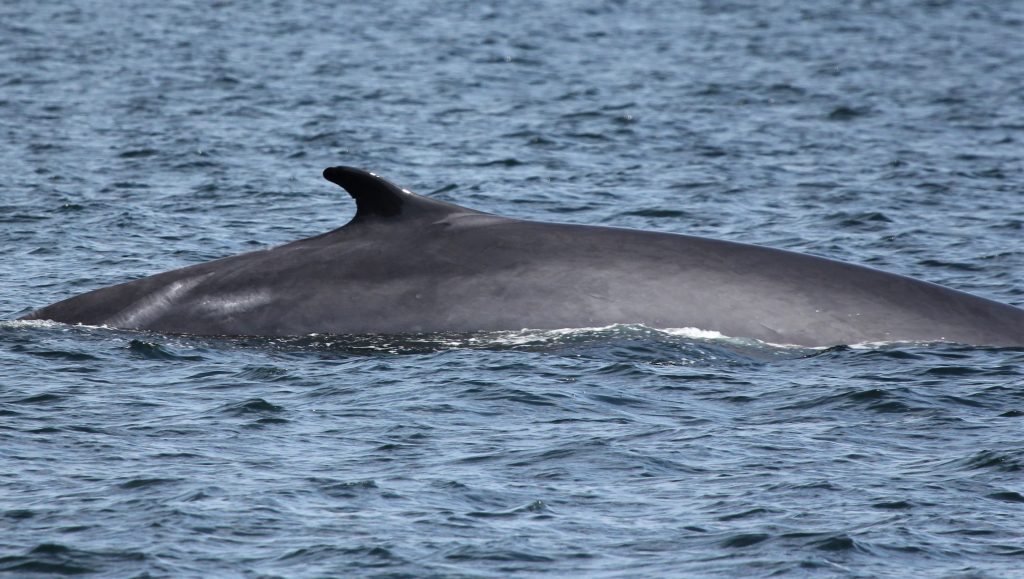
Thanks to all the adopters who have supported our program and organization. We hope you enjoy reading the updates about your whale and hope that someday you will have the chance to meet your whale face to face on the ocean. It really is a life-changing moment! Oh, and I still have a photo of Spoon on the wall in my office as a reminder of how I got my start in this crazy career.
